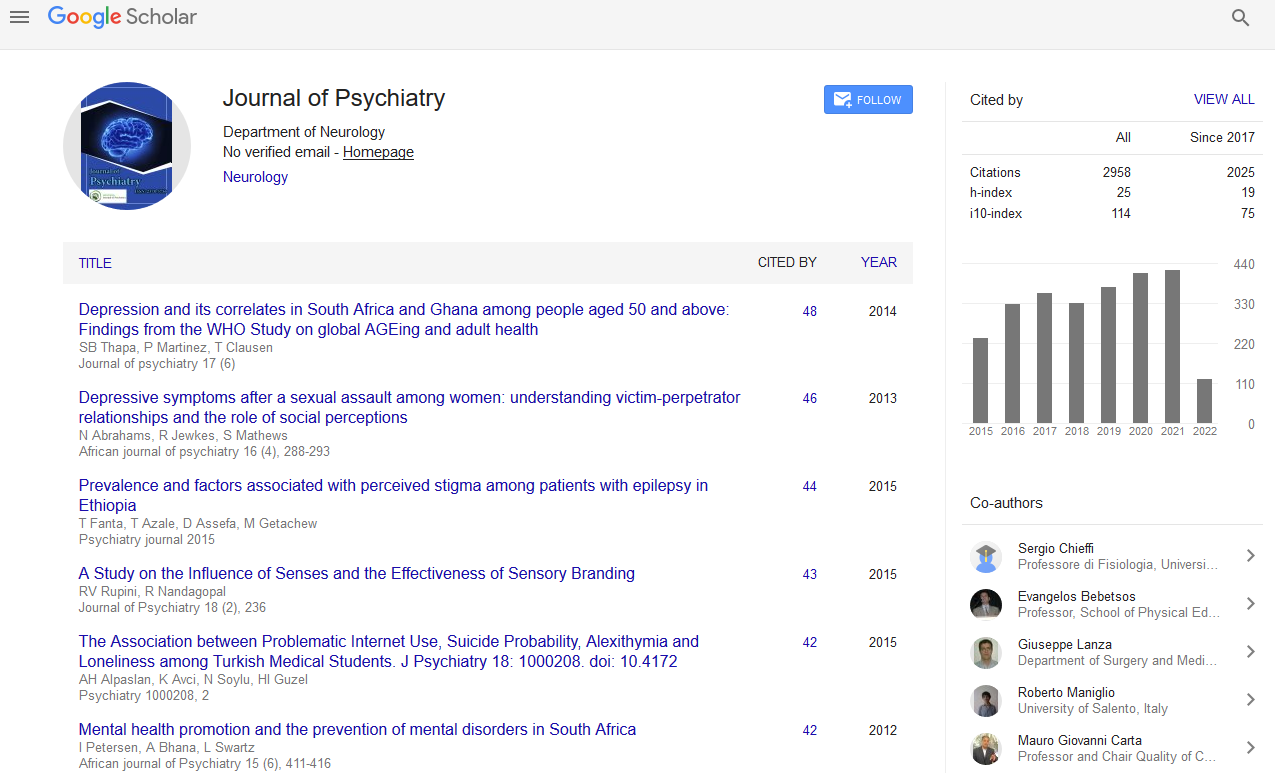PMC/PubMed Indexed Articles
Indexed In
- RefSeek
- Hamdard University
- EBSCO A-Z
- OCLC- WorldCat
- SWB online catalog
- Publons
- International committee of medical journals editors (ICMJE)
- Geneva Foundation for Medical Education and Research
Useful Links
Share This Page
Open Access Journals
- Agri and Aquaculture
- Biochemistry
- Bioinformatics & Systems Biology
- Business & Management
- Chemistry
- Clinical Sciences
- Engineering
- Food & Nutrition
- General Science
- Genetics & Molecular Biology
- Immunology & Microbiology
- Medical Sciences
- Neuroscience & Psychology
- Nursing & Health Care
- Pharmaceutical Sciences
Abstract
Prevalence and Associate Factors of Suicidal Ideation and Attempt among People with Schizophrenia at Amanuel Mental Specialized Hospital Addis Ababa, Ethiopia
Zebiba Nassir Hussien, Haddis Solomon, Zegeye Yohannis and Abdurahman Mohammed Ahmed
Background: Suicidal ideation is an important phase in the suicidal process, preceding suicide attempts and completed suicide. Suicide and suicidal attempts among people with schizophrenia often result a significant psychological, social and financial burden. Therefore, this study aimed to assess the prevalence and associated factors of suicidal ideation and attempt among people with schizophrenia. Methods: An Institution based cross -sectional study was conducted from November 2011 to May 2012 at Amanuel Mental Specialized Hospital among people with schizophrenia. Systematic random sampling technique was used to get a total of 423 samples from outpatient department of the hospital. Pre-tested structured questionnaire were used for interviewing the study participants. The collected data were, entered in to EPI-INFO software and analyzed by using SPSS version 19. Both bivariate and multivariate logistic regression analysis was done. Results: The prevalence of life time suicidal ideation and attempt among people with schizophrenia was found to be 27.3% and 19.3% respectively. Multiple logistic regression model revealed being single (AOR 3.04, 95% C.I=1.404-6.588), attending secondary education (AOR 2.52, 95% C.I=1.114-5.686), poor social support (AOR 3.11, 95% C.I=1.025-9.422) were association with suicidal ideation and attempt. Similarly co morbid depression, hopelessness, family history of suicide associated with suicidal ideation and attempt among people with schizophrenia. Conclusion: The rate of suicidal ideation and attempt in people with schizophrenia were found to be much higher than general population. Modifiable clinical factors like depression and poor psychosocial were risk suicide. Therefore, support should be given to manage suicidality of people with schizophrenia through creating social support system and clinical interventions during follow up.


